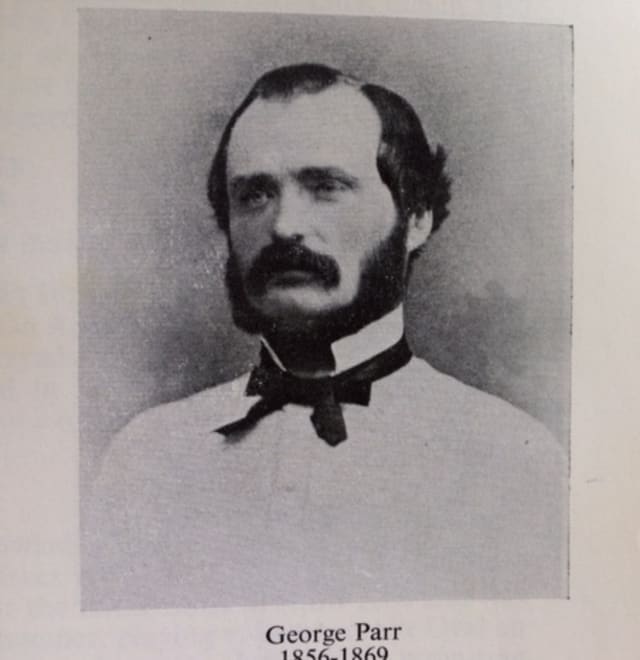Montgomery’s debut prompts some superstitious musing
Cricketing debutants usually have a few numbers in mind when they step out for their first innings… “let me get off the mark”… “double figures at least”… “fifty would be good”…
When Matt Montgomery walked out at number three for Notts in their recent match with Glamorgan he might have had a very different – and riskier – number in mind. As the County’s first First-Class debutant of the season, Matt carries the squad number 666!
He certainly hit all those notional targets, making 80 in that initial knock. If not quite a ‘beast’ of an innings, it was top score in Notts first innings and lasted through five partnerships whilst 220 runs were added – a far from scary set of numbers.
At that rate, he need not worry too much about the portents of his apparently ‘beastly’ squad number.
Matt’s elevation to the First-Class ranks got us thinking about other superstitious numbers. Thirteen is the most obvious but 63 is also ‘unlucky’ according to some numerologists and, in cricketing terms, there is always the dreaded ‘Nelson’ – 111.
In Australian cricket, their Nelson is 87, because it is thirteen short of a hundred.
Does any of this stand up to scrutiny in Notts history?
The squad numbering was started by Trent Bridge’s long-serving historian and librarian, the late Peter Wynne Thomas, who went back to the first First-Class match for the County side’s predecessor, the Nottingham Old Club, in 1826.
Thus the number 13 was given to a very early cricketer, one William Sheraton.
Sheraton played in six major Nottingham matches, between 1827 and 1831, all of them against Sheffield. On his debut he made Nottingham's top score, 20, batting at number three; by his last match, he was down at ten in the batting order and contributed just 0 and 1no. His First-Class record, therefore, reads 29 runs at 3.62, with one catch taken. It is believed he resided in Radford in the 1820s, but nothing more is currently known of him – so whether he was lucky or unlucky we cannot tell.
George Parr, the ‘Lion of the North’ and the only Nottinghamshire player of whom it could be justly claimed that he was in his day the Greatest Batsman in the World, may have been lucky to be gifted the talents he had but he certainly made the most of them. He was number 63 in Wynne Thomas’s list and defied any superstitions around the number to bat successfully for Notts and for William Clarke’s All England Eleven. 
Parr took over as manager and captain of both the All England Eleven and the Notts County side on Clarke’s death in 1856 and captained the first England team to go overseas – to North America in 1859.
An ancient elm stood on the Bridgford Road side of the ground and George hit it, through it and over it so frequently that it was known as ‘Parr’s Tree’; when a storm brought the elm down in 1976, timber from it was used to make several mementoes – a walking stick and stump are in the Trent Bridge Heritage store. A branch of the famous elm tree was laid on his coffin and went to rest with him in 1891.
What about Nelson then? At 111 in the squad list is one George Howitt. In whatever era of cricket they emerge, genuinely fast left-arm bowlers give even the best batsmen trouble – and Howitt of Old Lenton was certainly fast, being especially dangerous on bad wickets. Such was his prowess that he once dismissed W G himself for a ‘pair’; he took a hat-trick twice in the same game and another in a later match. An impressive haul; sadly, for Notts, none of these achievements came in matches for his home county.
For Notts, he played eight First-Class matches, scoring 45 runs, highest knock 16, at 3.75; he took 23 wickets at 16.65, with two five-wicket hauls and a best return of 5-25 versus Cambridgeshire.
Howitt’s father, Charles, was a noted local cricketer, and his cousin was the ill-fated William Scotton.
Adding in the Aussie ‘Nelson’ brings us to 87 in the Notts list and one Alexander McDougall, of whom the most notable thing, for a player of the 1850s, is that he was born in Kingston, Jamaica.
McDougall was drafted into the Nottinghamshire side against Surrey in June 1858 because Notts were without four regular players; he made 3 and 0, did not bowl and took no catches. Two other Notts debutants were in the XI that day; Alfred Diver, like McDougall, did not play for Notts again – despite being the top scorer in each innings – but the other newcomer was rather more significant. Richard Daft, who made 44no in Notts’ second innings, was destined to become the finest professional of his age.
The same could not be said about Alexander McDougall, who at that time was an undergraduate at Trinity College Cambridge. He played in several matches for the University but was not awarded his blue.
Nothing in any of those stories suggests that 666 should weigh heavily on the shoulders of Matt Montgomery - although his next major innings for Notts was in the opening match of the 2022 Royal London Cup, against Sussex, when he was out for...87!!
But, of course, with or without luck, as cricket’s army of numerologists will tell him, “…the Devil’s in the detail….”
July 2022
Profiles of all these players (and the other 600+) can be found at https://www.trentbridge.co.uk/trentbridge/history/players.html